#PowerApps with Microsoft Flow
Explore tagged Tumblr posts
Text
#power apps microsoft 365#power apps use cases#powerapps flow#Powerapps licensing#canvas power apps#powerplatform microsoft
0 notes
Text
Supply chain management has always been a complex challenge, but as businesses face increasing pressure to optimize operations and reduce costs, finding efficient solutions has become even more critical. In recent years, the Microsoft Power Platform has emerged as a powerful tool for resolving common supply chain issues. By offering a suite of integrated tools that allow businesses to automate processes, analyze data, and build custom applications, the Power Platform is transforming how companies approach supply chain management. One of the core strengths of the Power Platform lies in its ability to integrate different processes and systems, helping organizations streamline their supply chain operations. Through Power Automate development services, businesses can create automated workflows that reduce manual tasks and ensure a smoother flow of information between departments. Whether it's automating inventory management, order processing, or vendor communications, Power Automate helps eliminate inefficiencies that often slow down supply chain activities. The Power Platform's capacity to offer real-time insights on supply chain performance is another important element. With Power BI development company solutions, businesses can visualize and analyze vast amounts of data, uncovering trends, bottlenecks, and areas for improvement. This data-driven approach enables supply chain managers to make more informed decisions, identify risks, and adjust strategies proactively to maintain a smooth and responsive supply chain. The ability to build customized applications customized to specific supply chain needs is another game-changing feature of the Power Platform. A Microsoft PowerApps development company can help businesses create applications that improve communication, track shipments, or manage vendor relationships, all within a unified platform. This flexibility ensures that companies can quickly adapt to changes in the market or supply chain disruptions while maintaining control over their operations. In conclusion, the Microsoft Power Platform provides businesses with a comprehensive set of tools to tackle the challenges of modern supply chain management. By leveraging Power Automate, Power BI, and PowerApps, companies can automate tasks, gain valuable insights, and develop custom solutions that enhance their overall supply chain efficiency. Embracing the Power Platform in 2024 will be key for organizations looking to stay competitive and resilient in the face of ongoing supply chain challenges.
#power bi dashboard#power bi services#power bi solutions#workflow automation solutions#power automate consulting services#power automate development services#power apps development#power apps development services#microsoft powerapps development company#microsoft powerapps consulting services#power apps developers#power apps services#microsoft powerapps service#powerapps developers#power bi consultants#power bi consulting company#power bi development services
0 notes
Text

Expert Microsoft PowerApps Consulting Services: Unlocking Business Potential
Introduction
In today’s fast-paced digital landscape, businesses require agile solutions to enhance productivity, streamline operations, and improve customer experiences. Microsoft PowerApps, a powerful low-code application development platform, enables organizations to build custom applications tailored to their unique needs. However, to maximize its potential, expert consulting services are essential.
This article explores the benefits of Microsoft PowerApps consulting services, how they help businesses innovate, and the key aspects to consider when selecting a consulting partner.
Understanding Microsoft PowerApps
Microsoft PowerApps is a cloud-based, low-code application platform that allows users to create custom business applications without extensive coding knowledge. It integrates seamlessly with Microsoft 365, Dynamics 365, and other third-party applications, making it a versatile tool for businesses of all sizes.
Key Features of Microsoft PowerApps:
Low-Code Development: Build applications using a drag-and-drop interface with minimal coding.
Seamless Integration: Connect with Microsoft services, databases, APIs, and third-party platforms.
AI-Driven Capabilities: Enhance applications with artificial intelligence for automation and insights.
Cross-Platform Compatibility: Develop apps that work on web, mobile, and tablet devices.
Robust Security: Implement enterprise-grade security features to protect business data.
The Role of PowerApps Consulting Services
While PowerApps simplifies application development, expert consulting services help businesses optimize the platform’s full potential. Consultants provide strategic guidance, technical expertise, and customized solutions to address specific business challenges.
Benefits of PowerApps Consulting Services:
1. Accelerated App Development
With expert consultants, businesses can develop and deploy applications faster, reducing the time-to-market and improving operational efficiency.
2. Tailored Solutions
Consultants design custom applications that align with business objectives, ensuring that workflows and automation processes are optimized.
3. Seamless Integration with Existing Systems
PowerApps consultants help integrate applications with Microsoft 365, Dynamics 365, SharePoint, and other third-party platforms, ensuring data consistency and workflow efficiency.
4. Enhanced User Experience and Adoption
By focusing on user-centric design, consultants ensure that applications are intuitive, responsive, and easy to use, increasing adoption rates among employees.
5. Automation and AI Implementation
PowerApps consulting services include implementing AI-driven features, automation, and predictive analytics to enhance business intelligence and decision-making.
6. Scalability and Performance Optimization
Consultants ensure that applications are scalable and optimized for performance, supporting business growth and digital transformation.
Key Services Offered by PowerApps Consultants
1. Custom Application Development
Building tailored applications to meet specific business needs.
Creating interactive dashboards and reports.
2. Workflow Automation
Streamlining processes using Power Automate and AI-driven automation.
Reducing manual efforts and improving efficiency.
3. Data Integration and Connectivity
Connecting PowerApps with databases like SQL Server, Azure, SharePoint, and APIs.
Ensuring smooth data flow across business systems.
4. User Training and Support
Providing hands-on training to employees for effective app usage.
Offering ongoing support and maintenance for PowerApps solutions.
5. Security and Compliance Management
Implementing role-based access controls and data security measures.
Ensuring compliance with industry regulations such as GDPR and HIPAA.
Choosing the Right PowerApps Consulting Partner
Selecting the right consulting partner is crucial to achieving successful PowerApps implementation. Here are key factors to consider:
1. Expertise and Experience
Choose a consulting firm with a proven track record of successful PowerApps projects across different industries.
2. Customization Capabilities
Ensure the consultants can tailor applications to fit your business requirements and integrate them with existing systems.
3. Client Testimonials and Case Studies
Look for reviews, case studies, and testimonials that demonstrate the consultant’s ability to deliver results.
4. Scalability and Future Support
Select a partner that offers ongoing support, scalability, and future enhancements as your business grows.
5. Cost-Effectiveness
Compare pricing models and choose a consultant that provides high-quality services within your budget.
The Future of PowerApps and Business Innovation
As Microsoft continues to enhance PowerApps, the future holds significant advancements, including:
AI-Powered Business Applications: Leveraging machine learning and AI for predictive analytics and intelligent automation.
Enhanced Integration with IoT: Connecting PowerApps with IoT devices for real-time data monitoring and automation.
Advanced Collaboration Tools: Improving remote work efficiency with enhanced PowerApps integration in Microsoft Teams.
No-Code Innovations: Making app development even more accessible to non-technical users.
Conclusion
Microsoft PowerApps consulting services play a vital role in helping businesses unlock their full potential. By leveraging expert guidance, businesses can create customized applications, automate workflows, and integrate seamlessly with existing systems, leading to increased efficiency and productivity.
With the right PowerApps consulting partner, businesses can accelerate digital transformation, improve decision-making, and stay ahead in today’s competitive market. Whether you are a startup or an enterprise, investing in PowerApps consulting services is a strategic step toward achieving business success in the digital age.
0 notes
Text

#Visualpath is Best institute in Hyderabad offers top #MicrosoftDynamics365 CRM with real-time expert instructors, highly skilled and certified trainers with 10+ years of experience. and hands-on projects. Microsoft #Dynamics365 training Courses, from industry experts and gain experience. We provide to individuals globally in the USA, UK, Canada, Dubai, and Australia, etc. To schedule a demo, call +91-9989971070.
Course Covered:
Microsoft Dynamics 365, Power Apps, Power Automate, Power BI, Azure Logic Apps, Microsoft SharePoint, Dynamics 365 Sales, Microsoft Flow, AI Builder
Whatsapp: https://www.whatsapp.com/catalog/919989971070
Visit our Blog: https://visualpathblogs.com/
Visit: https://www.visualpath.in/online-microsoft-dynamics-crm.html
#MicrosoftDynamicsCRM#DynamicsCRM#MicrosoftDynamics365#dynamics365crm#CRMSoftware#DynamicsCRMTraining#LearnDynamicsCRM#CRMImplementation#MicrosoftDynamicsCertification#PowerApps#powerplatform#businessintelligence#MSDynamics#D365#Dynamics365#Microsoft#dynamics#dynamics365crm#powerappscrm
#Microsoft Dynamics CRM#Microsoft Dynamics 365 CRM#Microsoft Dynamics 365 Training Courses#Microsoft Dynamics CRM Certification#dynamics crm online training#Dynamics 365 online training#Dynamics 365 crm training course#Dynamics crm training#MS Dynamics CRM Training in Hyderabad#Microsoft Dynamics CRM Online Training
0 notes
Text
Al-Hiyal Automation LLC
Al-Hiyal Automation LLC delivers tailored PowerApps applications and PowerApps solutions, along with advanced Power BI reporting solutions. Our expertise includes Power App development services, ErosNXT, and Financial Analysis BI. Partner with us for Microsoft PowerApp tools, Cash Flow Management, and innovative business solutions.
PowerApps application
PowerApps solution
Power BI reporting solutions
1 note
·
View note
Text
Power Automate vs. Power Apps: Understanding Their Unique Roles in Business Automation
Automation and app development are the two significant areas that make business more efficient. Among the tools that facilitate this, Microsoft's PowerApps vs PowerAutomate are the two tools which help in this area. The user can create a custom app in a very short time with a PowerApps training course and less coding compared to the traditional method, and Power Automate automates repetitive tasks across applications.
As per reports recently 85% of businesses already use automation tools for optimizing workflows. Both do integrate with Microsoft services as well as third-party applications but have different purposes.
This article at Emergenteck explores the functionalities, differences, and ideal use cases of PowerApps vs PowerAutomate, making it possible for you to determine what is best applied to any situation to drive maximum value in your business operations between Power Automate vs Power Apps.
1. Overview of Power Apps and Power Automate
Power Apps is a low-code platform that enables its users to develop specific web and mobile apps meant for streamlining business operations. It does not demand deeper technical knowledge. On the other hand, Power Automate automates workflows between several different apps and services by helping reduce manual work as much as possible and improve productivity.
Both Power Automate vs Power Apps come within Microsoft's Power Platform with integrated applications from both Microsoft and third-party platforms meant to drive efficiency in all areas of business.
A. Power Apps
Power Apps is a low-code platform that enables users to create custom applications for web and mobile, allowing businesses to automate processes, streamline workflows, and improve productivity without deep coding skills.
Purpose:
Power Apps is a low-code development platform intended to make it easy and fast for businesses to build custom applications that don't necessarily require much technical programming knowledge. The idea is for "citizen developers"- non-technical users in organizations-to create apps around their business needs.
Functionality:
Users can design web and mobile applications with Power Apps. There are templates which users can use to create the application, drag-and-drop interfaces, or even by writing their code. Power Apps provides features in data integration, forms, and reports. With these, internal apps are possible in business environments, like handling customer management and employee workflows and gathering information.
Integration:
With connectors, you can easily connect PowerApps to other Microsoft products, like SharePoint, Microsoft Teams, Excel, and other external data sources. With regard to connecting cloud databases and on-premises data, Power Apps allows wide options for integration.
Use Cases:
Some common applications of Power Apps include the following:
Customized CRM apps
Apps for employee onboarding
Inventory management solutions
Custom approval workflows
Data collection on fieldwork
B. Power Automate
Power Automate is a workflow automation tool for connecting apps and services to automate repetitive tasks, streamline workflows, improve efficiency, reduce manual work, and enhance productivity in business operations.
Power Automate, formerly known as Microsoft Flow, is the automation of workflow between apps and services. It aims to automate manual tasks by developing automated processes that save time, reduce errors, and increase productivity in general.
Functionality:
The core capability of Power Automate is the flow. The flows are workflows that can execute actions based on the given conditions, and an example would be triggering an action each time a new record is added to a database or saving a document automatically to SharePoint whenever a form has been submitted.
Integration:
Just like Power Apps, Power Automate connects to many Microsoft products and services outside of the company. The product has more than 500 connectors available for users to automate tasks between other popular platforms like Office 365, Dynamics 365, Salesforce, and Google services. It also connects to systems such as databases, social media, and email platforms, so it's very versatile for businesses having different needs.
Use Cases:
Power Automate is used for
Automating approval workflows
Auto-sync data between applications
Developing alerting systems with rules for specific triggers
Tracking and managing service desk requests and incidents
Setting up lead generation workflow
C. Key Differences: Power Apps vs Power Automate
Although PowerApps vs PowerAutomate belong to the same Power Platform, their purposes and applications differ significantly:
Core Functionality: The main application is Power Apps, which is used in application development. Users create custom applications with minimal use of code writing. It uses Power Automate, which enables users to automate workflows and procedures among different applications and services.
Customized vs Automation: Power Apps is for companies requiring developed custom interfaces or mobile apps to support certain functionalities, while Power Automate should be used to automate specific repeated activities, transfers, and interactions between different apps.
User Interaction: Power Apps is more involving users since it involves designing custom apps that the employees or customers can use. The Power Automate runs in the background automating specific tasks and only needs users to input directly after initiating the automation process.
D. When to Use Each Tool: Power Automate vs Power Apps
The question of which tool to use is essentially a question of knowing how to use them. First, know what you're doing with your business when you are looking for Power Automate vs Power Apps:
Power Apps in use when:
You need to design a custom application for internal or external consumption.
You require a straightforward end-user interface for inputting or retrieving information for your employees or customers.
Your business process needs mobile and web applications customized to your company's application domains.
Apply Power Automate if:
You want to automate repetitive tasks like approval, notification, or syncing of data.
You want to integrate multiple applications and services for the smooth running of your workflow.
You need to save time by automating manual processes and reducing human errors.
PowerApps vs PowerAutomateare among the most important tools for any business in the current digital environment. While Power Apps help create applications tailored to the needs of a business, Power Automate helps automate workflows that could be repetitive. They possess strong business automation solutions through the saving of time spent in manual executions and obtain more efficiency in operations.
If someone is looking forward to getting hands-on experience, then getting enrolled in a PowerApps training course at Emergenteck may be a good starting point to master these tools. Knowing PowerApps vs PowerAutomate, and their strengths, will surely drive productivity and innovation in your business processes.
0 notes
Text
Power Apps vs. Power Automate: Key Differences
In the modern age organizations are constantly seeking for methods to streamline operations & increase efficiency. To achieve this they frequently use digital tools to automate operations & create specialized applications. Microsoft Power Platform provides two such instruments like Power Apps & Power Automate. Though both systems have the same purpose of streamlining workflows they perform completely different duties. Knowing how they vary helps when selecting the appropriate tool for your individual requirements.
Let us look at the fundamental distinctions between Power Apps & Power Automate by visualizing them as two employees in an occupied workplace each with their unique set of talents & duties.
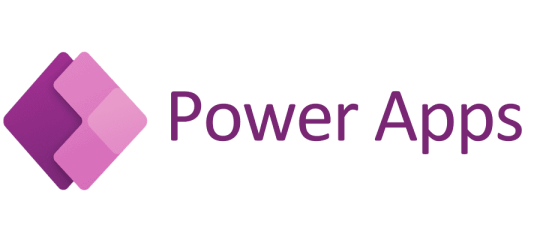
The Office Task Manager Power Automate
Imagine an office assistant who is responsible for making sure things run smoothly in the background. Every day this assistant organizes documents responds to emails & handles workflows. They are consistent reliable & rarely need supervision because they follow predefined rules. You assign them tasks & they automatically get them done.
This office assistant represents Power Automate. Power Automate is Microsoft automation tool designed to help users create workflows to handle repetitive tasks. These workflows known as flows are triggered by specific events like receiving an email or submitting a form. Once triggered Power Automate carries out a sequence of actions following the same process each time.
Let us say you want to automatically save email attachments to a designated folder in your SharePoint system. Power Automate allows you to set up a flow that monitors your inbox & moves attachments to the correct folder. Once the flow is created it runs without needing further input from you. Essentially Power Automate works like an office worker who continuously performs background tasks allowing you to focus on higher priority projects.
The Custom Application Builder Power Apps
Now imagine a different office worker who excels at building custom tools to meet specific needs. This person listens to your requests identifies problems & creates personalized solutions. If you ask them to design a form to track customer inquiries or develop a system to manage inventory they will build it just the way you want it.
This represents Power Apps. PowerApps is a low code platform that enables users to build custom applications to meet unique business needs. These applications can be anything from simple data entry forms to complex tools that integrate with other systems. The key advantage of Power Apps Course is that non developers can create these applications without needing advanced coding skills.
For example imagine your company needs an internal app for employees to log their daily hours & submit project updates. Instead of hiring a developer or waiting for IT support you can use PowerApps to create the app yourself. It can connect to data sources like SharePoint Excel or SQL databases & can easily be updated as your business evolves.
Core Differences Between Power Automate & Power Apps
While Power Automate & Power Apps both belong to the Power Platform they are built for different purposes & excel in separate areas:
Purpose
Power Automate is designed to automate workflows & routine tasks. It acts like the office assistant that handles processes behind the scenes keeping everything on track.
Power Apps is focused on creating custom applications. It is like the toolmaker who builds specific solutions to meet unique needs.
Functionality
Power Automate is all about workflows. It integrates with hundreds of apps & services like Outlook SharePoint & third party tools such as Salesforce. It automates notifications data transfers & various repetitive tasks.
Power Apps is focused on app development. It offers users an intuitive interface to build applications using drag & drop features & it connects seamlessly to the Microsoft data ecosystem.
User Skill Level
Power Automate is simple to use. You do not need to be highly technical to create workflows. You just need a clear understanding of the process you want to automate & Power Automate handles the rest.
Power Apps might require more planning. Although it is a low code platform building useful applications often needs some logic & understanding of data management.
Output
Power Automates work happens in the background. Its flows run automatically moving data or triggering processes without requiring user interaction.
Power Apps creates tangible products for users to interact with. These apps feature user interfaces forms & buttons for direct engagement.
How They Work Together
Even though Power Automate & Power Apps are different they complement each other well. For example you could build an app with Power Apps that employees use to request time off. Then Power Automate could be used to send the request through the approval process. The app provides the interface while the automation tool handles the workflow.
Which Tool Should You Use
Deciding between Power Apps & Power Automate depends on your specific goals:
If your goal is to minimize manual tasks & boost productivity Power Automate is ideal. Its designed to handle workflows & repetitive tasks without needing user input.
If you need a custom solution to address a unique business challenge Power Apps is your best choice. It allows you to create custom apps that match your exact requirements.
Together Power Automate & Power Apps provide a powerful toolkit for improving business efficiency. Like two specialized workers in an office they both have important roles in making sure your processes run smoothly.
By understanding their differences you can choose the right tool for the job. Whether you are building custom apps or automating tasks the Power Platform has you covered.
0 notes
Text
Top 10 Low-code Platforms for Healthcare
The healthcare industry requires robust, scalable, and secure technology solutions to manage everything from patient records and appointment scheduling to complex billing systems and compliance management. Low-code platforms have emerged as a vital tool in helping healthcare organizations streamline operations, improve patient care, and innovate faster with less technical overhead. Here, we explore the top 10 low-code platforms that are particularly well-suited for healthcare applications.
1. Kovaion’s Low-code Platform
Kovaion’s low-code platform is tailored to meet the complex demands of the healthcare sector. It excels in providing solutions that facilitate seamless integration with existing healthcare information systems, ensuring compliance with regulations such as HIPAA. Its platform also offers modules for patient management, electronic health records (EHR), and more, making it an excellent choice for healthcare providers looking to improve operational efficiency and patient outcomes.
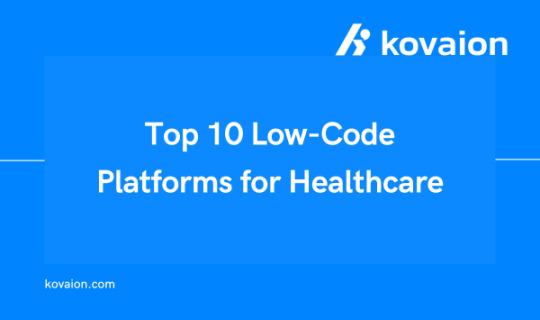
It goes beyond just a generic low-code tool by offering:
Pre-built Healthcare Components: Kovaion boasts a rich library of pre-built components specifically tailored for healthcare workflows. This includes modules for patient portals, appointment scheduling, care coordination, claims management, and more. These pre-built components save development time and ensure compliance with industry standards.
Seamless Integration: Kovaion excels at integrating with existing Healthcare Information Systems (HIS) and Electronic Health Records (EHR) systems. This eliminates data silos and ensures a smooth flow of information across your healthcare organization.
HIPAA Compliance: Understanding the critical nature of patient data privacy, Kovaion prioritizes security. Their platform is built with compliance in mind, adhering to regulations like HIPAA (Health Insurance Portability and Accountability Act).
Advanced Features: In addition to core functionalities, Kovaion offers advanced features like:
Generative AI App Builder: Leverage the power of AI to automate tasks and personalize the user experience within your applications.
Drag-and-Drop Workflows: Visually design automated workflows to streamline processes and improve efficiency.
Interactive Dashboards: Gain real-time insights into your healthcare data through customizable dashboards.
Mobile-Ready Applications: Build applications that are accessible to patients and staff on any device.
2. Mendix
Known for its all-encompassing development environment, Mendix supports healthcare organizations in developing apps that optimize clinical processes, enhance patient engagement, and manage operational efficiency. Its strong security features and ability to integrate with existing tools make it a top choice for sensitive healthcare environments.
3. OutSystems
OutSystems provides a high-speed development platform that helps healthcare institutions develop critical applications quickly. Its robust security features and compliance with healthcare standards, including data protection regulations, make it suitable for handling sensitive information and patient data.
4. Microsoft PowerApps
PowerApps allows healthcare organizations to build custom apps without extensive coding knowledge. Its integration with Microsoft’s Azure and Office 365 suites means that it can securely handle health data and improve collaboration across teams.
5. Appian
Known for its BPM (business process management) capabilities, Appian’s low-code platform helps healthcare providers streamline processes and improve patient management. Its scalable solutions support healthcare systems of all sizes, enhancing operational effectiveness and patient care delivery.
6. Pega Systems
Pega’s platform is highly suitable for healthcare providers needing automated and streamlined workflows. It helps in patient journey mapping, operational visibility, and personalizing patient engagement, which is crucial for efficient healthcare service delivery.
7. Salesforce Health Cloud
Built on the Salesforce platform, Health Cloud provides powerful tools to connect interactions across the healthcare journey. It is designed to help organizations deliver more personalized patient experiences and build stronger relationships through better patient management and engagement.
8. Zoho Creator
Zoho Creator’s low-code platform is effective for small to medium healthcare facilities that require custom application solutions at a reasonable cost. It provides easy data management, integration, and compliance with healthcare regulations, making it an accessible choice for many healthcare providers.
9. ServiceNow
ServiceNow’s platform helps digitize workflows and create a more connected patient care system. It’s particularly effective for managing internal operations and improving efficiency across departments within healthcare organizations.
10. Nintex
Nintex facilitates workflow automation in healthcare settings, allowing for better data management and improved patient care coordination. Its intuitive tools help reduce errors and streamline administrative tasks, thus enhancing overall efficiency.
When choosing a low-code platform for healthcare, organizations must consider factors like compliance, integration, security, and workflow management. Among the available options, Kovaion emerges as the superior choice. Its platform is specifically designed to meet the complex needs of the healthcare industry, offering robust tools for compliance and security, seamless integration with existing systems, and the flexibility to handle diverse healthcare processes. This makes Kovaion an ideal solution for healthcare organizations seeking to expedite their digital transformation while maintaining high standards of patient care and data protection.
#low code platform#low code#low code app development platform#app development#low code application development platform#low-code
0 notes
Text
Microsoft Dynamics CRM Training | Hyderabad
Power Automate Flow from PowerApps in Dynamics 365 CRM
Introduction:
Dynamics 365 CRM, PowerApps, and Power Automate, offers powerful solutions to meet these demands. One particularly effective approach is triggering a Power Automate flow from within PowerApps, seamlessly integrating workflows and automating repetitive tasks without the need for coding. - Microsoft Dynamics CRM Training
Simplifying Workflow Integration:
Integrating Power Automate flows with PowerApps in Dynamics 365 CRM empowers users to automate processes and trigger actions based on specific events or conditions. Whether it's sending notifications, updating records, or initiating approvals, this integration provides a seamless way to enhance workflow efficiency. - Dynamics 365 CRM Training Course
Creating a Trigger-Based Flow:
The first step in leveraging this capability is to create a trigger-based flow using Power Automate. Within the Power Automate interface, users can define the trigger conditions based on events occurring in Dynamics 365 CRM. These triggers can include record creation, modification, or deletion, among others, providing flexibility to tailor the automation to specific business needs.
Building the PowerApp Interface:
Once the trigger-based flow is set up, the next step is to integrate it into a PowerApp interface within Dynamics 365 CRM. PowerApps enables users to design custom apps without the need for extensive coding knowledge. Within the PowerApps interface, users can add buttons, forms, and other controls to create a user-friendly interface for interacting with CRM data. - Dynamics CRM Online Training
Configuring the Power Automate Trigger:
This configuration involves specifying the flow to be triggered and defining any input parameters required for the flow to execute successfully. With a few simple clicks, users can establish a seamless connection between PowerApps and Power Automate, enabling automated actions to be initiated directly from the app interface.
Enhancing User Productivity:
By integrating Power Automate flows with PowerApps in Dynamics 365 CRM, organizations can significantly enhance user productivity. Instead of manually performing routine tasks, users can trigger automated processes with the click of a button, freeing up time to focus on more strategic activities. - MS Dynamics CRM Training
Driving Business Agility:
By leveraging the integration between PowerApps and Power Automate, organizations can quickly adapt to changing requirements and seize new opportunities. The ability to automate tasks and trigger actions in response to specific events enables businesses to stay ahead of the curve and maintain a competitive edge.
Conclusion:
Integrating Power Automate flows with PowerApps in Dynamics 365 CRM offers a powerful solution for automating processes and enhancing workflow efficiency. Without the need for coding, users can create trigger-based flows, build custom app interfaces, and seamlessly connect the two to automate tasks and streamline operations.
Visualpath is the Leading and Best Institute for learning MS Dynamics CRM Online in Ameerpet, Hyderabad. We provide Microsoft Dynamics CRM Online Training Course, you will get the best course at an affordable cost.
Attend Free Demo
Call on - +91-9989971070.
Visit : https://www.visualpath.in/microsoft-dynamics-crm-training.html
WhatsApp : https://www.whatsapp.com/catalog/919989971070/
#MicrosoftDynamicsCRMTraining#DynamicsCRMOnlineTraining#MSDynamicsCRMTraining#Dynamics365CRMTrainingCourse#MSDynamicsCRMTraininginHyderabad#DynamicsAdvancedWarehouseManagement
0 notes
Text
0 notes
Text
MuleSoft Microsoft

Integrating MuleSoft with Microsoft technologies allows organizations to connect, automate, and transform their business processes. MuleSoft, known for its Anypoint Platform that enables companies to connect applications, data, and devices, has strong integration capabilities with various Microsoft products and services. This integration plays a crucial role in digital transformation strategies, allowing businesses to leverage their existing Microsoft investments alongside MuleSoft’s powerful integration and API management tools.
Integration Points between MuleSoft and Microsoft Technologies:
Microsoft Azure:
Azure Service Bus: MuleSoft can integrate with Azure Service Bus to enable cloud-based messaging between applications and services.
Azure Blob Storage: MuleSoft can connect to Azure Blob Storage, allowing for storing and retrieving large amounts of unstructured data.
Azure SQL Database: Anypoint Platform enables seamless integration with Azure SQL Database, facilitating data synchronization, migration, and management tasks.
Microsoft Dynamics 365:
MuleSoft offers connectors for Dynamics 365, enabling organizations to synchronize data and automate processes between Dynamics 365 and other applications, whether on-premises or in the cloud.
Microsoft SharePoint:
By integrating MuleSoft with SharePoint, companies can automate document management processes, enabling efficient document sharing, storage, and collaboration.
Microsoft Power Platform (Power BI, PowerApps, and Automate):
MuleSoft can feed data into Power BI for advanced analytics and visualizations, enhancing decision-making processes.
Integration with PowerApps allows for the creation of custom business apps with data from various sources, including legacy systems, through MuleSoft APIs.
MuleSoft can trigger or be triggered by automated workflows in Power Automate, enabling end-to-end process automation across different applications and services.
Microsoft Office 365:
MuleSoft can connect to various Office 365 services, including Outlook, Excel, and OneDrive, facilitating automation and data exchange between these applications and other business systems.
How to Achieve Integration:
Use of Connectors: MuleSoft’s Anypoint Platform provides pre-built connectors for many Microsoft services, simplifying the integration process. These connectors abstract the underlying API complexity, making it easier to implement robust integration flows.
Custom Integration: For services or functionalities not covered by pre-built connectors, developers can create custom integrations using MuleSoft’s SDK. This involves directly interacting with Microsoft APIs.
API-Led Connectivity Approach: MuleSoft advocates for an API-led connectivity approach, where reusable APIs are created to connect with Microsoft services. This method promotes efficiency and agility, enabling organizations to adapt to new business requirements quickly.
Benefits of Integration:
Enhanced Productivity: Automating workflows between MuleSoft and Microsoft technologies reduces manual tasks and streamlines business processes.
Data Consistency: Synchronizing data across platforms ensures consistency, accuracy, and real-time availability of critical business information.
Scalability: The combined power of MuleSoft and Microsoft technologies allows businesses to scale their integration solutions as they grow, accommodating new applications and data sources with minimal effort.
Innovation: Leveraging MuleSoft’s integration capabilities with Microsoft’s productivity suite and business applications enables organizations to innovate and create new services or products, enhancing their competitive edge.
Demo Day 1 Video:
youtube
You can find more information about Mulesoft in this Mulesoft Docs Link
Conclusion:
Unogeeks is the №1 Training Institute for Mulesoft Training. Anyone Disagree? Please drop in a comment
You can check out our other latest blogs on Mulesoft Training here — Mulesoft Blogs
You can check out our Best in Class Mulesoft Training details here — Mulesoft Training
Follow & Connect with us:
— — — — — — — — — — — -
For Training inquiries:
Call/Whatsapp: +91 73960 33555
Mail us at: [email protected]
Our Website ➜ https://unogeeks.com
Follow us:
Instagram: https://www.instagram.com/unogeeks
Facebook: https://www.facebook.com/UnogeeksSoftwareTrainingInstitute
Twitter: https://twitter.com/unogeeks
#MULESOFT #MULESOFTTARINING #UNOGEEKS #UNOGEEKS TRAINING
0 notes
Text

Elevate Efficiency: Dynamics Business Solutions Pioneers Microsoft Power Platform Implementation for Saudi Arabian Enterprises.
#PowerAutomate#PowerPlatform#Microsoft#MicrosoftFlow#MicrosoftPowerAutomate#UAE#Dubai#AbuDhabi#SaudiArabia#Egypt#Qatar#hr
0 notes
Text
Why Your Business Needs a PowerApps Consultant to Maximize Process Efficiency
Ever wondered how to streamline processes seamlessly?
PowerApps Consulting is a powerful platform that equips companies with the necessary tools to create custom business applications quickly and efficiently. A skilled PowerApps consultant can effectively utilize Microsoft Power Apps to develop such applications without the need for extensive coding. This, in turn, can have a significant impact on driving business growth.
Power Apps consultants are highly skilled professionals who conduct a thorough analysis of your business processes. They identify any bottlenecks, inefficiencies, and areas that need improvement. They then design and develop customized applications that are guaranteed to automate and optimize your workflows.
Optimizing business operations is a crucial role of PowerApps consultants. PowerApps platforms enable automated and digitized versions of manual business processes by seamlessly integrating with data platforms.
Let's see how PowerApps Consultants contribute to Business Processes:
Helps to create Custom applications as per specific business needs and operations.
Helps to analyze business processes to identify bottlenecks, inefficiencies, and areas for improvement.
Helps Microsoft services like Power BI and Azure to integrate with the power platform
Helps to focus on creating instinctive and user-friendly interfaces.
Help to design flexible applications for various devices.
Helps to replace manual and paper-based work with digitized processes and reduce operational costs
Why Choose PowerApps Consultant from Integrative Systems
Our team of Microsoft-accredited PowerApps Consultants and Developers will work together to understand your business requirements. We will then use PowerApps and Flow (Power Automate) to create a custom business app and input your data.
At Integrative Systems team of PowerApps experts can help you capture data from various programs, including Office365, Dynamics 365, Power BI, Dropbox, and other sources. With the assistance of our PowerApps consultants, you can unlock the full potential of PowerApps by developing powerful solutions that optimize processes, automate workflows, and boost productivity.
Design solutions to enhance collaboration, productivity, and knowledge sharing. Leverage Microsoft 365, Office 365, and SharePoint to improve workflows and processes. Responsible for estimating work and meeting timelines. Feel free to drop us a line at [email protected] & we will be happy to help you.
0 notes
Text
Getting Started With Microsoft Flow
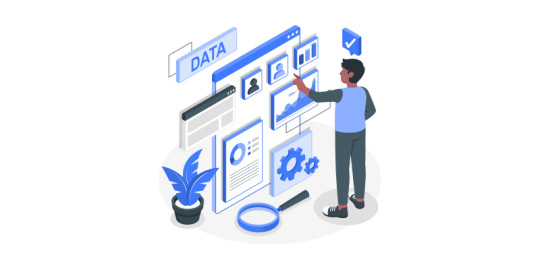
Microsoft flow is a cloud-based workflow engine, Using Flow end users can create cross application workflows (no code workflows). Flow is a part of office 365 E3 suite. It is a successor of SharePoint designer workflows. Complex level Flows can be promoted to an Azure logic app.
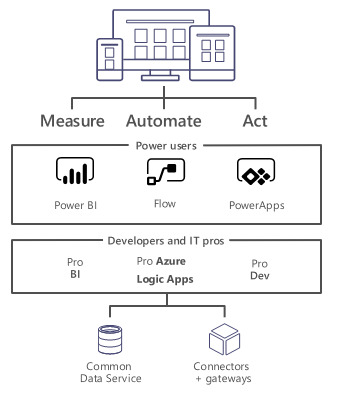
Microsoft Flows Vs SharePoint Designer Workflows

Anatomy of Microsoft Flow
Flow Designer
Connectors, Triggers & Actions
Variables & Data Flow
Expressions
Branching, Error Handling & Scopes
Flow Designer – Create a Flow from Browser or Mobile Application
Desktop Version
Go to https://flow.Microsoft.com
Sign-in with Office 365 Account
Start from existing template or import from disk or create from scratch (both in desktop & mobile browsers)
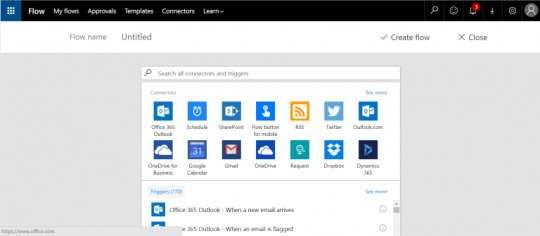
Mobile Version
Install flow mobile app, sign in
Create new flow (template or from scratch).
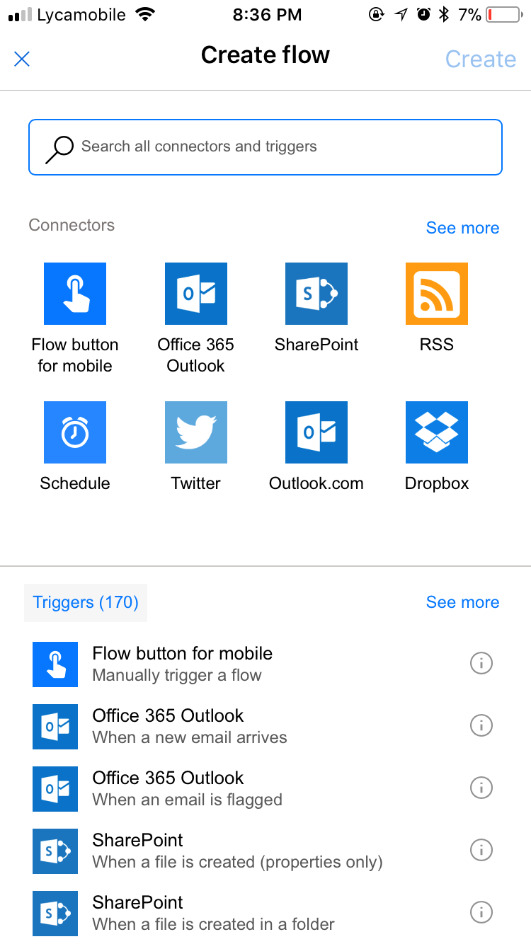
Connectors
Connectors Wrapper around an API that allows Flow to talk with other services.It exposes Triggers & Actions.
Standard Connectors – included as part of E3
Microsoft Connectors (SharePoint, Azure Blob storage, SQL Server.)
Non-Microsoft Connectors (Twitter, Slack.)
https://us.flow.microsoft.com/en-us/connectors/?filter=&category=standard
Premium Connectors – additional cost
Microsoft Connectors (HTTP with Azure AD.)
Other Connectors (Salesforce, MySQL.)
https://us.flow.microsoft.com/en-us/connectors/?filter=&category=premium
Custom Connectors – additional cost , development
ISV, System Integrators, End users can create custom connectors to integrate any system/application/service.
https://us.flow.microsoft.com/en-us/connectors/?filter=&category=custom
Triggers
Run based on user action or event
From other apps in office 365 – PowerApps, SharePoint, etc.
From SQL
From dedicated Flow button

Run on a schedule
Flow also run based on time schedule, From every minute to 1 am on Days.
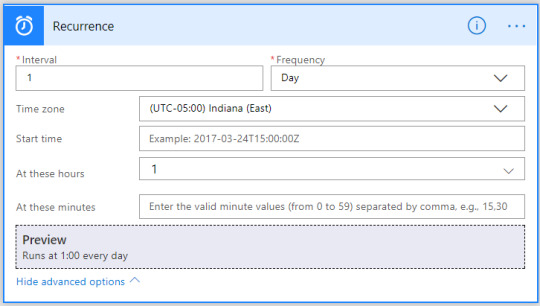
Run by HTTP GET/POST to URL generated by flow
Call another Flow
Call from any application/service/HTTP calls
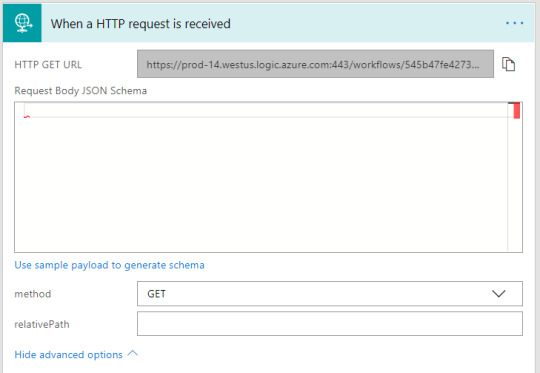
Scenarios & Types of Triggers
Triggers - Scenarios
Simple: Flows start with a Trigger.
Advanced: Flows can have more than 1 trigger (async actions)
Custom: Flows can have custom triggers
Types
Polling Trigger
Periodically checks the service
Checks count as executions
Push Triggers
Listen for data on an endpoint or wait for event.
Actions
Execute CRUD operations with workflow context
SharePoint: Create Item, Delete Item, Create File.
SQL: Insert Row, Update Row, Delete Row, Get Row.
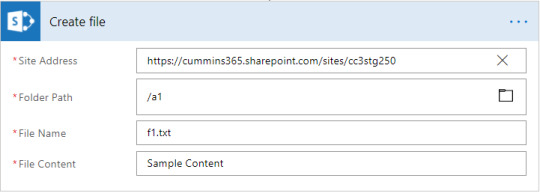
Transform Data
Inline – using expressions (e.g. string operations, math operations.)
Other services – Html to text.
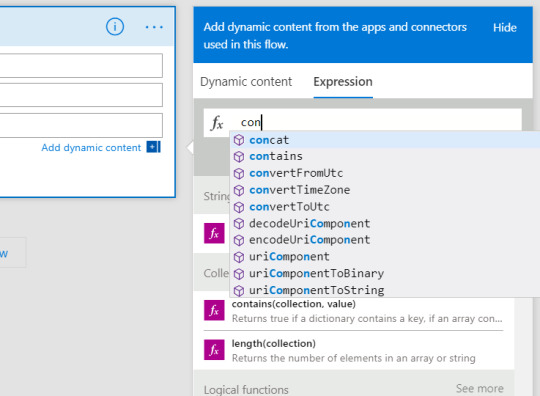

Send Notification
Send mobile notification, send email notification etc.
Call other Flow
Chain Flows to create complex Flows.
Variables
Use Variables connector*
Initialize & then set value
Supported value types (Boolean, String, Object, Array, Float).
Variables are NOT always necessary!
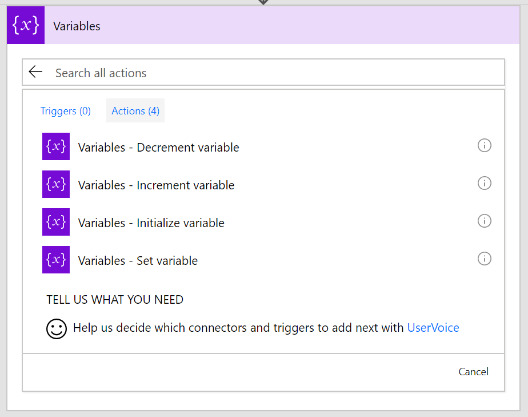
Why variables are not always necessary?
Data Flows from each step and is available for all later steps
‘Add Dynamic Content’ allows us to select outputs from previous steps
Certain outputs show up based on the types of the inputs and outputs.
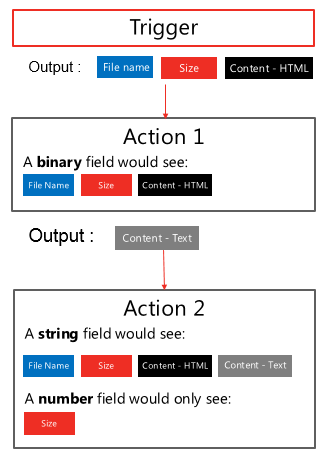
Expressions
Expressions can be used in most of the fields to transform data inline
IntelliSense available as you type
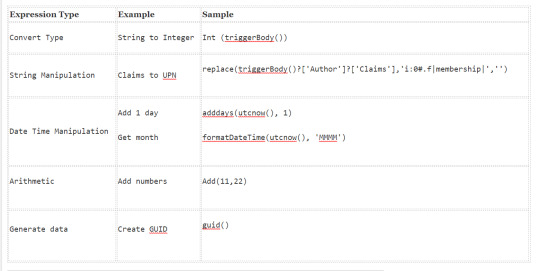

Branching
If-then-else

Switch

For-Each
By default, parallel
Parallel (20 exec)
Supports sequential
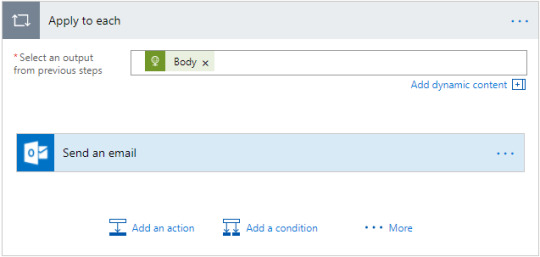
Do-Until
Emulate State machines
Help in approvals & more

Parallel branches

Error Handling
Actions can be set to run if previous action fails/times out.
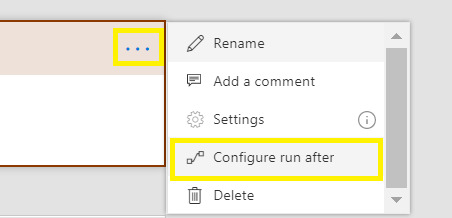
Scopes
Logically group actions
Allow advanced error handling for a group of actions
Scope boxes are in brown boxes.
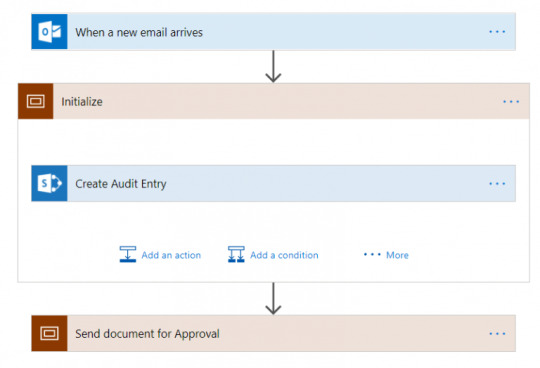
0 notes
Text
DynamicsPlus: Empowering Business with the Power Platform

Introduction
In today’s fast-paced business environment, businesses look for novel approaches to boost operational effectiveness and spur growth. Staying ahead of the competition now requires embracing cutting-edge technologies. One such company leading the charge in empowering businesses with powerful tools is DynamicsPlus .
Understanding DynamicsPlus:
Mission and Vision:
The objective of DynamicsPlus is to offer organizations cutting-edge solutions that let them take full use of the Microsoft Dynamics 365 Power Platform. This is a purpose that is both obvious and ambitious. The startup sees a world in which businesses of all sizes can easily harness data, develop unique applications, and optimize business processes.
Company Background:
DynamicsPlus , which was founded by a group of fervent IT enthusiasts, has quickly become a leader in the field of Power Platform consulting. We have developed a reputation as a reliable partner for companies looking to use the potential of Microsoft’s integrated suite of products by placing a strong emphasis on excellence and client happiness.
The Power Platform: A Comprehensive Overview:
What is the Power Platform?
With the help of Microsoft Dynamics 365’s Power Platform, businesses can now analyze data, take action on insights, and create unique applications without having to have a deep understanding of coding. Power BI, Power Apps, Power Automate (formerly Flow), Power Virtual Agents, and Power Pages and make up its five primary parts.
Benefits of the Power Platform:
Numerous advantages of the Power Platform include improved productivity, simplified procedures, data-driven decision-making, and increased team collaboration. It changes the game for businesses thanks to its intuitive UI and easy connectivity with other Microsoft products.
Components of the Power Platform:
Power BI: This component enables organizations to visualize and analyze data in real-time, gaining valuable insights and making informed decisions.
Power Apps: With Power Apps, businesses can create custom applications that suit their unique requirements, enhancing efficiency and productivity.
Power Automate: Formerly known as Flow, Power Automate allows the automation of repetitive tasks and processes, saving time and effort.
Power Virtual Agents: Power Virtual Agents enables anyone to create powerful chatbots using a guided, no-code graphical interface. It minimizes the IT effort required to deploy and maintain a custom solution by empowering subject matter experts to build and maintain their own conversational solutions.
Power BI: Empowering Business Intelligence:
Introduction to Power BI:
A robust business intelligence solution called Power BI enables firms to turn unprocessed data into insightful representations. Both technically savvy users and non-technical people may use it thanks to its intuitive UI and drag-and-drop capabilities.
Key Features of Power BI:
Interactive Dashboards: Users may easily examine insights thanks to the aesthetically appealing data presentation provided by Power BI’s interactive dashboards.
Data Connectivity: With a variety of data sources, including Excel, SharePoint, and cloud-based applications, the tool allows seamless connectivity..
Natural Language Queries: Power BI allows users to ask questions in plain language and receive relevant visualizations as answers.
How Power BI Enhances Data Visualization:
Data visualization is a crucial aspect of business intelligence. Power BI simplifies the process of creating interactive and visually appealing reports, making complex data easier to comprehend and act upon.
Power Apps: Building Custom Business Solutions:
Overview of Power Apps:
Users of PowerApps have the ability to create, share, and customize applications to suit their particular business requirements. Users can construct apps using its low-code technique without having to have substantial coding knowledge.
Advantages of Power Apps:
Creating Custom Apps with Power Apps:
Building a custom app with Power Apps involves a simple step-by-step process that allows users to create applications tailored to their organization’s workflow, enhancing productivity and operational efficiency.
Integrating Power BI and Power Apps for Enhanced Performance:
Combining Power BI and Power Apps:
The integration of Power BI and Power Apps brings forth a powerful synergy that enhances the value of both applications. By embedding Power BI reports into Power Apps, users can gain insights while directly interacting with the app’s functionalities.
Use Cases of Integrated Solutions:
DynamicsPlus Success Stories: Real-world Examples:
Business Transformations with DynamicsPlus:
DynamicsPlus has played a vital role in transforming businesses across various industries. From enabling data-driven strategies to optimizing workflows, our solutions have driven remarkable success stories.
Testimonials from Satisfied Customers:
Numerous satisfied customers have attested to the transformative impact of DynamicsPlus and the Power Platform on their operations. Our experiences reflect the efficiency and effectiveness of the solutions provided.
The Future of Power Platform:
Upcoming Developments and Innovations:
DynamicsPlus continues to evolve its offerings to adapt to the ever-changing technological landscape. The company remains committed to staying at the forefront of innovation.
DynamicsPlus Vision for Growth:
As the Power Platform continues to gain traction worldwide, DynamicsPlus envisions expanding its reach to serve more businesses and drive digital transformation across industries.
Conclusion
DynamicsPlus has established itself as a go-to partner for companies looking to take advantage of the full potential of the Power Platform thanks to its extensive knowledge and commitment to excellence. Power BI and Power Apps enable enterprises to make data-driven choices, streamline operations, and develop specialized solutions catered to their particular requirements by seamlessly integrating both products.
1 note
·
View note
Text
Accelerating Digital Transformation with Power Apps Migration
Digital transformation is about using digital technology to improve how your organization works. Digital transformation is adopting digital solutions and data for business processes and activities to engage customers, optimize operations, transform products, and empower employees. It allows organizations to build infrastructure with flexible capacity per business demands, expanding business models and revenue. Every business eventually needs to reinvent itself in the digital age for survival.
PowerApps can accelerate digital transformation. It is included as part of the widely used Office 365 platform. It can significantly impact how your business works and is an excellent means of application to accelerate your organization toward digital transformation. PowerApps can automate and support several specific, reasonably simple tasks. Trained employees can use power apps to automatically record information to Dynamics 365 using Microsoft Flow, eliminating the paper and manual data entries for several daily tasks.

Power Apps can move your organization to digital transformation as you can build custom business apps connecting to your data stored either on Microsoft Dataverse or in various online and on-premises data sources, such as SharePoint, Microsoft 365, Dynamics 365, and SQL Server. You can automate service requests, work on business workflow needs, and enable additional capabilities, like onboarding tasks, team member contact information and forms to complete their internal profiles. and customization for business tasks.
#digital transformation#powerappsdevelopment#Power Apps Migration#PowerApps#Office 365#Application acceleration#Automation#Dynamics 365#Microsoft Power Apps#Microsoft Power Platform
0 notes